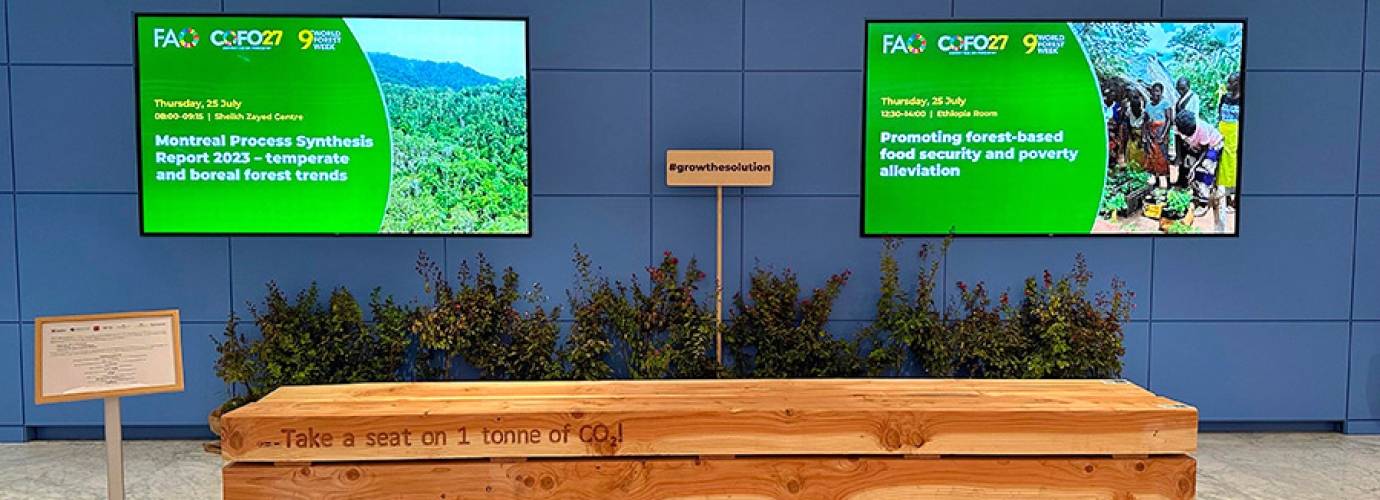Take a seat on 1 tonne of CO2! At FAO in Rome a wood bench turn the spotlight on the Model Forests

The 27th FAO Committee on Forestry (COFO), took place in Rome last week at the same time as the 9th World Forest Week, attended by delegations from more than 100 countries, with 800 delegates, 20 ministers and deputy ministers, and around 60 non-governmental and research organisations.
During the entire week, the participants found to greet them at the entrance a huge wooden bench that says “Take a seat on 1 tonne of CO2!”. The installation was promoted by FAO, the Secretariat of the Mediterranean Model Forest Network and the Montagne Fiorentine Model Forest and realized by the Bioeconomy Institute of the National Research Council (CNR - IBE) following an idea of EUSTAFOR, The European State Forest Association.
The initiative fits in with the line drawn by the “grow the solution” campaign promoted by FAO in the last year to raise awareness of the positive role of wood in storing carbon dioxide, which is absorbed by forests through photosynthesis, and thus help combat climate change. Wood, when sourced from sustainably managed forests, is a natural and renewable material that is widely used in Europe and around the world and can perform several important actions:
- carbon sink effect of the forests;
- carbon storage effect of wood products;
- substitution for carbon-intensive materials.
The European and Italian Forest Strategies, as well as the The State of the World's Forests 2024, presented at the FAO last week, emphasise the role of protection and sustainable management of forests in mitigating climate change, together with the needs of sustainable forest management to deal with the increasing demand of wood by the global society.
The bench was made from douglas fir wood (Pseudotsuga menziesii), sourced from a sustainably managed and planned forest in the territory of the Montagne Fiorentine Model Forest. It consists of about 1 cubic meter of timber equivalent to 1 tonne of CO, stored in the chemical structure of the wood. The initiative involved several stakeholders active in the Model Forest territory, reiterating the key-role of the network to face local and global challenges.


